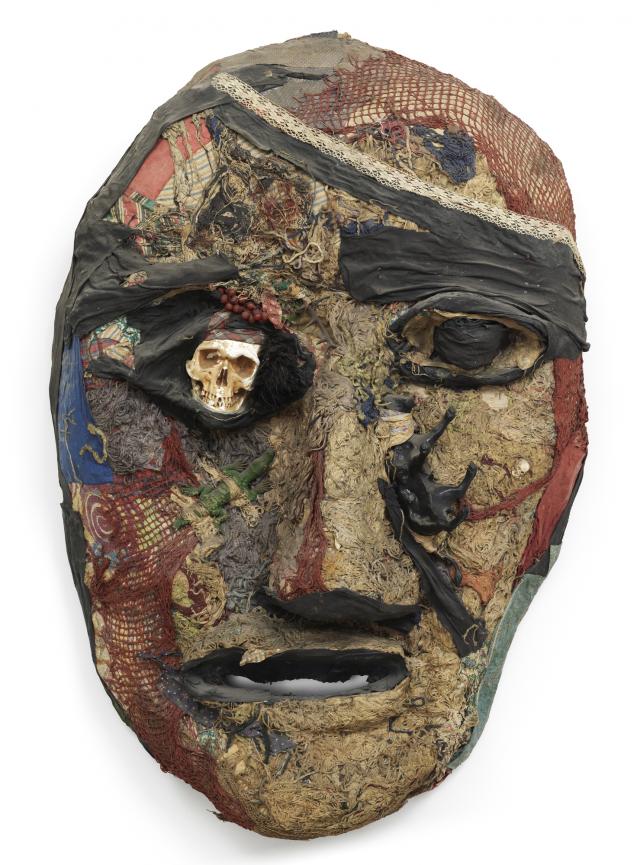Before shaping polyester resin for her monumental Nanas, which were to triumphantly occupy exhibition rooms and public spaces beginning in 1967, Niki de Saint Phalle revived the assemblage tradition, favouring more diverse, more fragile materials. The first Nanas in 1965 were made of papier mâché and wool, revealing an interest in hybrid compositions. It was at the age of twenty-three, while sectioned at a French clinic for depression, that Saint Phalle started creating her first “collages” out of twigs, pebbles, grass and other gathered objects.
Through its face made of fabric, wool and salvaged objects, Le Capitaine Hook (Le pirate / Tête) (1964) evokes that pleasure of experimenting with varied materials. Saint Phalle was self-taught, and did not try to integrate established artistic genres, instead giving free rein to her imagination and impulses. Taking inspiration from Swiss-German folklore during her stay in Switzerland in 1964, she borrowed some of its representative motifs (like death’s heads and devils), which she freely mixed with cultural and autobiographical references in her sculptures.
The portrait of Jean Tinguely’s first wife Eva Aeppli, a representation of La Sanera della Primavera, as well as the faces of Gilles de Rais, Doctor Mabuse and Napoleon found a place in this series of eight masks created in 1964 and 1965. While some of these large heads allude to a personal story, others activate a whole Western imagination of violence, suffering, pathology and death.
However, for Saint Phalle, these large heads also testified to her belief in the therapeutic function of art, which makes it possible to tackle painful subjects with a certain optimism and joie de vivre.
Through its face made of fabric, wool and salvaged objects, Le Capitaine Hook (Le pirate / Tête) (1964) evokes that pleasure of experimenting with varied materials. Saint Phalle was self-taught, and did not try to integrate established artistic genres, instead giving free rein to her imagination and impulses. Taking inspiration from Swiss-German folklore during her stay in Switzerland in 1964, she borrowed some of its representative motifs (like death’s heads and devils), which she freely mixed with cultural and autobiographical references in her sculptures.
The portrait of Jean Tinguely’s first wife Eva Aeppli, a representation of La Sanera della Primavera, as well as the faces of Gilles de Rais, Doctor Mabuse and Napoleon found a place in this series of eight masks created in 1964 and 1965. While some of these large heads allude to a personal story, others activate a whole Western imagination of violence, suffering, pathology and death.
However, for Saint Phalle, these large heads also testified to her belief in the therapeutic function of art, which makes it possible to tackle painful subjects with a certain optimism and joie de vivre.
